What's New
Displaying results 1801 - 1810 of 4924
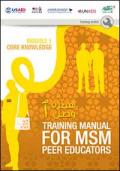
Resource | Tools,
The training presented in this manual has been developed to help operationalise the UNAIDS MENA regional publication HIV and outreach programs with men who have sex with men (MSM) in the Middle East and North Africa (MENA): from a process of raising awareness to a process of commitment.
It provides technical information and practical tools for peer educators to use as part of MSM outreach programmes in the Middle East and North Africa. These programmes aim to reduce the spread of HIV and other sexually transmitted infections (STIs) among MSM within a framework and context where their privacy, confidentiality and rights are respected.
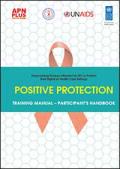
Resource | Tools,
Women affected by HIV in Nepal have reported violations of their rights, particularly in health care settings, being subject to forced and coerced sterilization or abortions, or denied access to sexual and reproductive health services. Yet, according to a UNDP Report released in 2013, not a single case was officially filed claiming discrimination or abuses in a health care setting. This is why this toolkit is needed and why it is vital for Nepal's fight against HIV.
This training manual, Positive Protection: Empowering Women Affected by HIV to Protect their Rights at Healthcare Settings, will help ensure no one is left behind or overlooked in our work to achieve the Sustainable Development Goals (SDGs). This manual is aimed at empowering women with HIV to know and protect their rights, and to gain access to justice in cases where those rights have been violated.
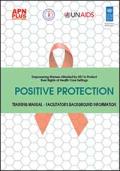
Resource | Tools,
Positive Protection is a training manual to empower civil society organizations to protect the rights of women affected by HIV at health care settings in Nepal. It was developed by the United Nations Development Programme (UNDP), the Asia Pacific Network of People living with HIV (APN+) and the National Federation of Women Living with HIV and AIDS in Nepal, in partnership with UNAIDS.
The training manual was developed based on consultations with a wide range of national civil society groups in Nepal, including a two-day consultative workshop in November 2014 in Kathmandu to agree on the main areas to be included in the manual, and a two-day meeting in August 2015 in Nepal to agree on and validate the final draft of the manual.
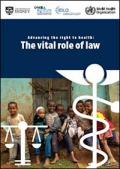
Resource | Publications,
This report aims to raise awareness about the role that the reform of public health laws can play in advancing the right to health and in creating the conditions for people to live healthy lives. By encouraging a better understanding of how public health law can be used to improve the health of the population, the report aims to encourage and assist governments to reform their public health laws in order to advance the right to health.
The report highlights important issues that may arise during the process of public health law reform. It provides guidance about issues and requirements to be addressed during the process of developing public health laws. It also includes case studies and examples of legislation from a variety of countries to illustrate effective law reform practices and some features of effective public health legislation.

Resource | Publications,
Adolescent health has become a priority on the global agenda. The Every Woman Every Child Global Strategy for Women's, Children's, and Adolescents' Health (2016-2030), launched at the Sustainable Development Summit in September 2015, has added a focus on adolescents, in view of the uneven progress thus far in addressing their rights and needs. As part of the Every Woman Every Child movement, many governments have made political commitments to prioritize adolescent health together with their overall efforts in improving reproductive, maternal, newborn, child health.
Given this context, this document can guide country stakeholders in conducting a systematic situation assessment that will enable them to prioritize adolescent health within their national policy processes. The goal is to ensure future investments are guided by available data on adolescents, and importantly, maximally-used to support evidence-informed health interventions that can be brought to scale in order to reach and fulfill the rights of adolescents, especially those left behind.
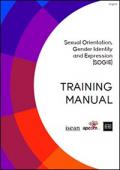
Resource | Tools,
As a network that focuses on male and transgender sexual health issues, one of ISEAN vision is to make societies within ISEAN are more accepting of sexual orientation and gender identity within the context human rights. ISEAN realizes that disseminating comprehensive information about sexual orientation and gender identity and expression (SOGIE) to our community is the most important and urgent thing that must be done prior to implementing the next program.
The SOGIE Training Manual can be used as a guide in organizing capacity building on the basic knowledge of SOGIE. This manual consists of five modules that discuss the terms related to gender and sexuality; introduction to gender and sexuality; the process of identity formation and its challenges; stigma and discrimination, including homophobia and transphobia; and psychological issues related to gender and sexuality.
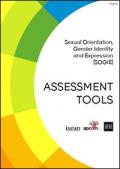
Resource | Tools,
ISEAN has developed sexual orientation and gender identity and expression (SOGIE) package that can be applied by organizations that focus on the issue of sexuality and sexual health as well as by other organizations that consider this issue is important to be institutionalized in their organizations.
The first document of this SOGIE Package is the SOGIE Assessment Tool that is used to measure the sensitivity level of an organization and its personnel to the issue of SOGIE. This tool can be used as a database for organizations that want to mainstream SOGIE issue in organization’s activities.
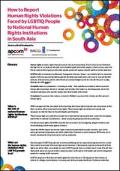
Resource | Publications,
Like all people, if LGBTIQ people are to achieve wellbeing and be respected and given worth in society they need to be assured of human rights and protections. Unfortunately, experience shows that these rights are, all too often, unavailable for many LGBTIQ people due to criminal laws in most of South Asia that punish same-sex sexual conduct, and give powers to the police to threaten and arrest transgender people for causing 'public nuisance'. LGBTIQ people are often discriminated against for who they are. This happens in their homes, at schools or colleges, at workplaces, in housing, and while accessing healthcare.
National human rights institutions (NHRIs) can be approached by the victimised LGBTIQ people (or through their representatives) who seek to complain about rights violations that they have experienced. It is the duty of NHRIs to consider these complaints and respond to them by inquiring into their accuracy and substance, and investigating the violations that have been brought to their notice.
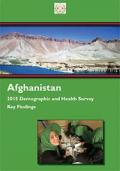
Resource | Publications,
The 2015 Afghanistan Demographic and Health Survey (AfDHS) is designed to provide data for monitoring the population and health situation in Afghanistan. The 2015 AfDHS is the first Demographic and Health Survey conducted in Afghanistan in collaboration with The Demographic and Health Surveys Program. The objective of the survey was to provide reliable estimates of fertility levels, marriage, fertility preferences, awareness and use of family planning methods, breastfeeding practices, nutrition, maternal and child health and mortality, awareness and behavior regarding HIV/AIDS and other sexually transmitted infections (STIs), and other health-related issues such as smoking, tuberculosis, and cancer that can be used by program managers and policymakers to evaluate and improve existing programs.
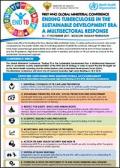
Resource | Fact Sheets,
Tuberculosis (TB) is the leading infectious disease killer worldwide today. It carries profound economic and social consequences. The public health crisis of multi-drug resistant TB (MDR-TB) continues. Although 49 million lives have been saved through global efforts since 2000, actions and investments fall far short of those needed to end the TB epidemic. High-level multisectoral action is needed, and action on TB can serve as a tracer for the Sustainable Development Agenda.





